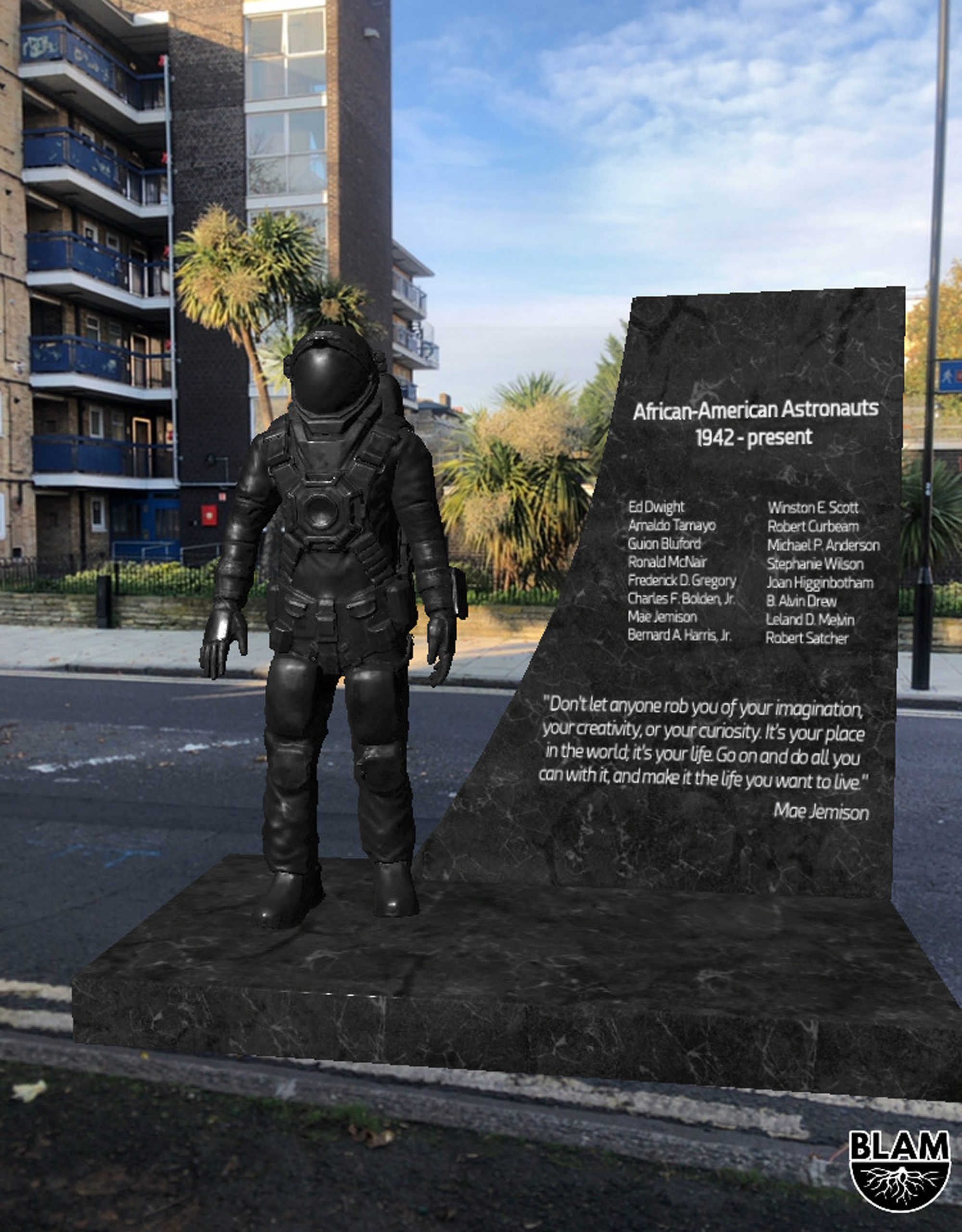
London non-profit BLAM has developed an augmented reality (AR) app called History Bites, which gives users the chance to see black history memorialised through virtual plaques and sculptures.
Developed as part of Black History Month, the mobile application is aimed at kids and profiles five different figures, including Mae Jemison, the first black woman to travel to space.
Completing a quiz about each of them allows users to place a corresponding monument in the world around them using AR, so they can see their heritage and history represented wherever they want – whether in prominent public spaces or their own neighbourhood.

"At BLAM we are constantly seeking new ways to counterbalance the effects of Eurocentricity and racism on Black lives and the creation of this app can help Black children reaffirm positive ideas and notions about their black identity," BLAM founder Ife Thompson told Dezeen.
"Through racism and the media, Black children are disproportionately exposed to negative narratives and concepts about their blackness. This often leads to them internalising negative stereotypes about themselves and others that look like them."
"We believe it is possible to raise the racial-esteem and racial identity of Black children by showing them positive narratives about themselves, in order to stop them from internalising negative stereotypes about their racial group," she continued.
The BLAM app features men and women from across history and the African diaspora, including Musa I who ruled over the West African empire of Mali in the 1300s and is widely considered the richest person who ever lived.
Also included is Kwame Nkrumah, who led the Gold Coast colony to independence from the British in 1957 and went on to govern the region as the first president of Ghana.

The app features two women who are still alive today – NASA astronaut Mae Jemison and Stella Dadzie, British author and founder of the activist group Organisation of Women of African and Asian Descent (OWAAD).
The only event to be included is the four-month-long Bristol Bus Boycott, which took place in the UK in 1963 and forced the Bristol Omnibus Company to back down from its discriminatory ban on black and Asian drivers.
This is immortalised in the app through a sculpture of a raised black fist, serving as a symbol of solidarity and resistance.

"We do not have enough statues of Black people in the UK," Thompson said.
"The UK education system remains a white space. And since we do not learn truthful narratives about our past, it is almost impossible to honour something you have never even been taught about."

Out of thousands of statues in the UK, only 15 are of named, black individuals, according to estimates by the BBC – the same number as the approximately 15 statues of people directly involved in the transatlantic slave trade which still stand in places across the UK today.
One of these statues, depicting slave trader Edward Colston, was torn down by protestors during a Black Lives Matter protest in Bristol this June, leading advocates including London mayor Sadiq Khan and Dezeen's editor Tom Ravenscroft to speak out in favour of replacing them with monuments that represent the local community and its history.

A number of white British artists including Banksy and Marc Quinn were quick to propose replacements, with Quinn even going so far as to install his sculpture of BLM protester Jen Reid in place of Colston's without official permission.
Designer Ini Archibong recently updated his Theoracle art installation to comment on racial injustice by crossing out its title and rendering it mute.
The post BLAM app lets users erect augmented reality statues of historical black figures appeared first on Dezeen.
from Dezeen https://ift.tt/367TGi6
No comments:
Post a Comment